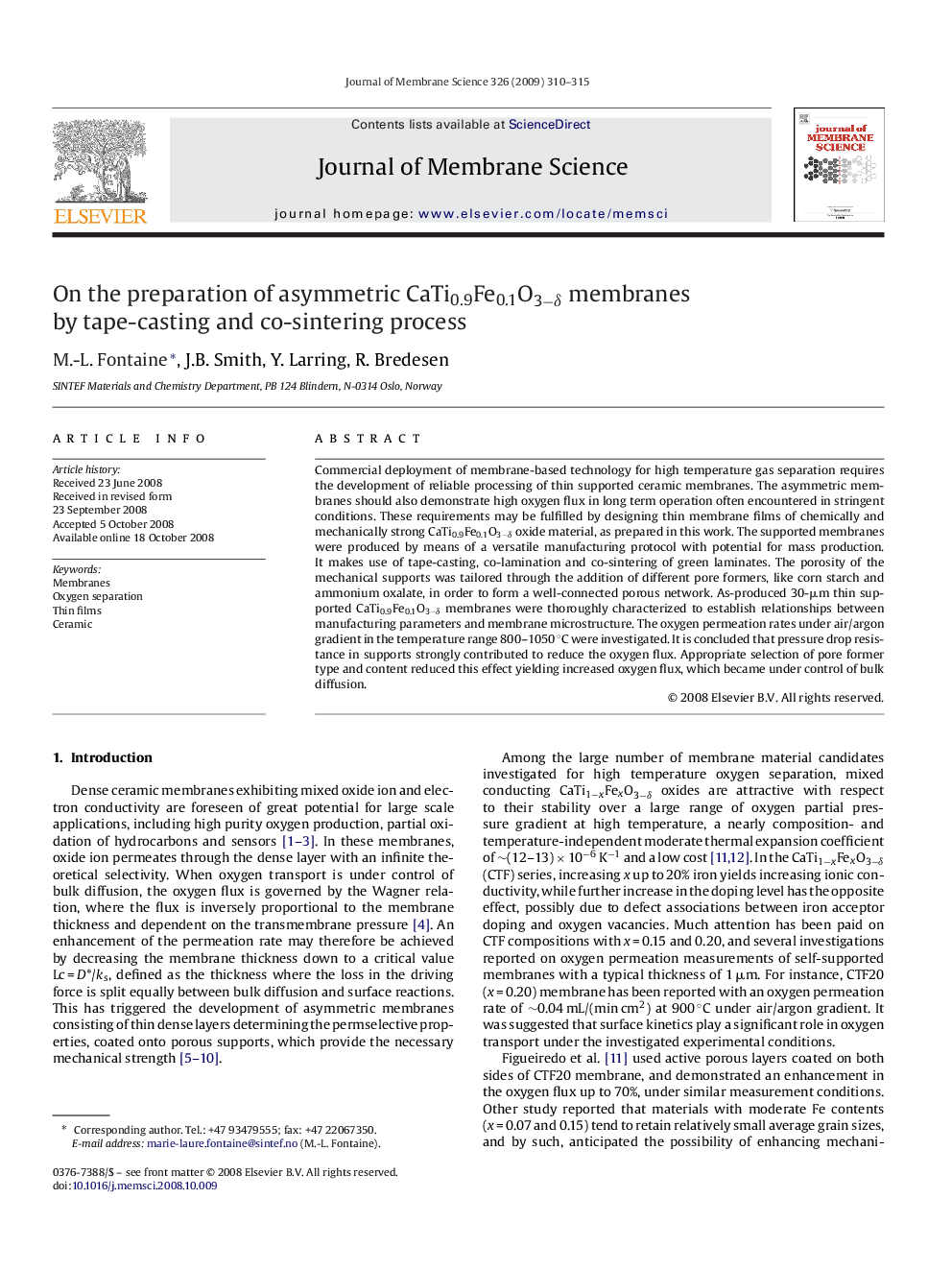| Article ID | Journal | Published Year | Pages | File Type |
|---|---|---|---|---|
| 637386 | Journal of Membrane Science | 2009 | 6 Pages |
Commercial deployment of membrane-based technology for high temperature gas separation requires the development of reliable processing of thin supported ceramic membranes. The asymmetric membranes should also demonstrate high oxygen flux in long term operation often encountered in stringent conditions. These requirements may be fulfilled by designing thin membrane films of chemically and mechanically strong CaTi0.9Fe0.1O3−δ oxide material, as prepared in this work. The supported membranes were produced by means of a versatile manufacturing protocol with potential for mass production. It makes use of tape-casting, co-lamination and co-sintering of green laminates. The porosity of the mechanical supports was tailored through the addition of different pore formers, like corn starch and ammonium oxalate, in order to form a well-connected porous network. As-produced 30-μm thin supported CaTi0.9Fe0.1O3−δ membranes were thoroughly characterized to establish relationships between manufacturing parameters and membrane microstructure. The oxygen permeation rates under air/argon gradient in the temperature range 800–1050 °C were investigated. It is concluded that pressure drop resistance in supports strongly contributed to reduce the oxygen flux. Appropriate selection of pore former type and content reduced this effect yielding increased oxygen flux, which became under control of bulk diffusion.
